Mulching 101: The Ultimate Guide to Mulching Around Trees
PUBLISHED ON
SHARE THIS ARTICLE
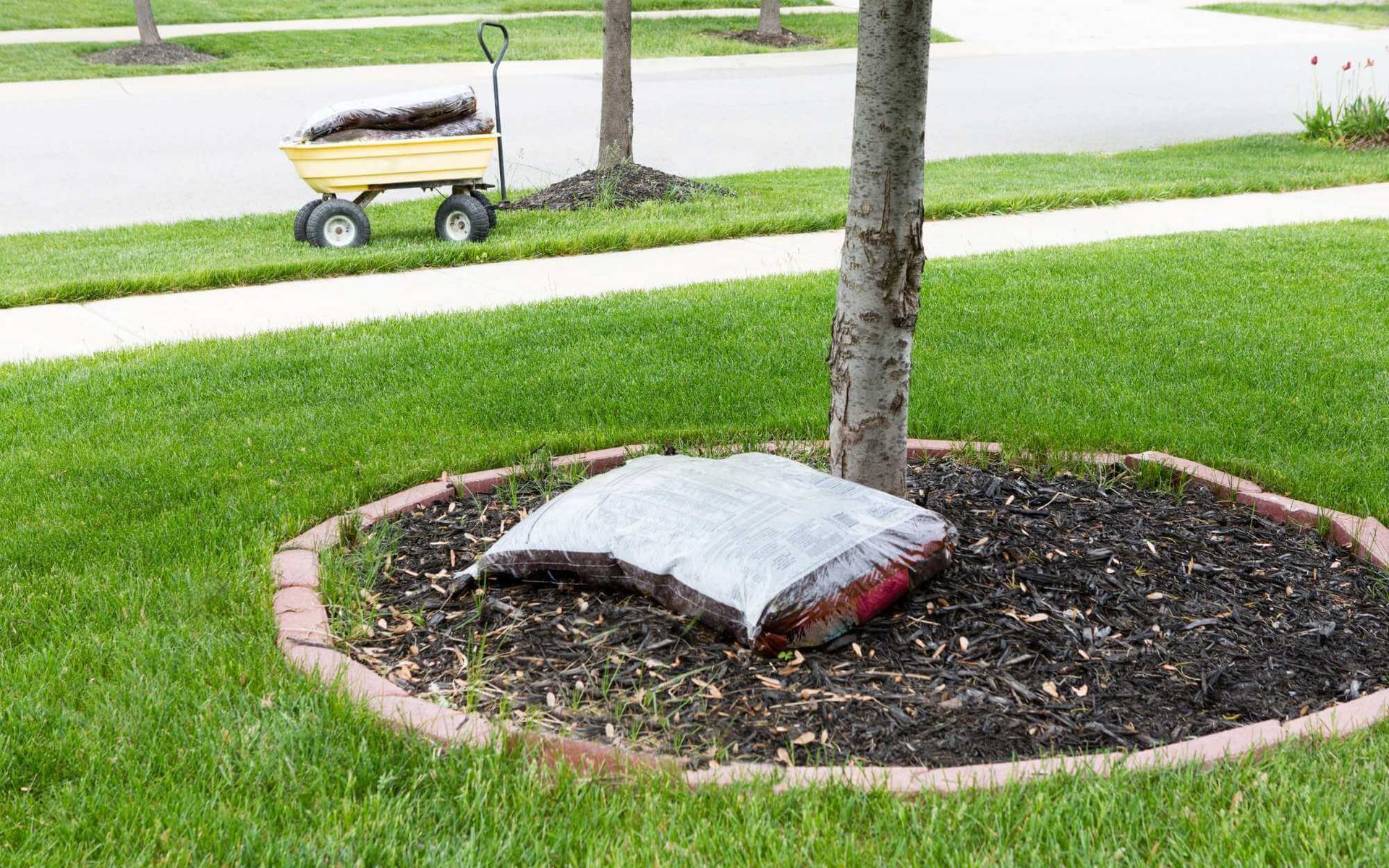
Mulching is an essential practice for promoting healthy, vibrant, young trees. It helps retain moisture in the soil, suppresses weeds, and adds a decorative touch to your landscape.
Whether you're a seasoned gardener or a novice tree enthusiast, understanding the fundamentals of mulching around trees is crucial.
In this guide, you'll learn how to mulch around trees, the right amount of mulch to use, and tips for maintaining a healthy mulch bed. Discover how this simple yet powerful technique can make a remarkable difference in the well-being of your trees.
The Basics of Mulching: Overview and Benefits
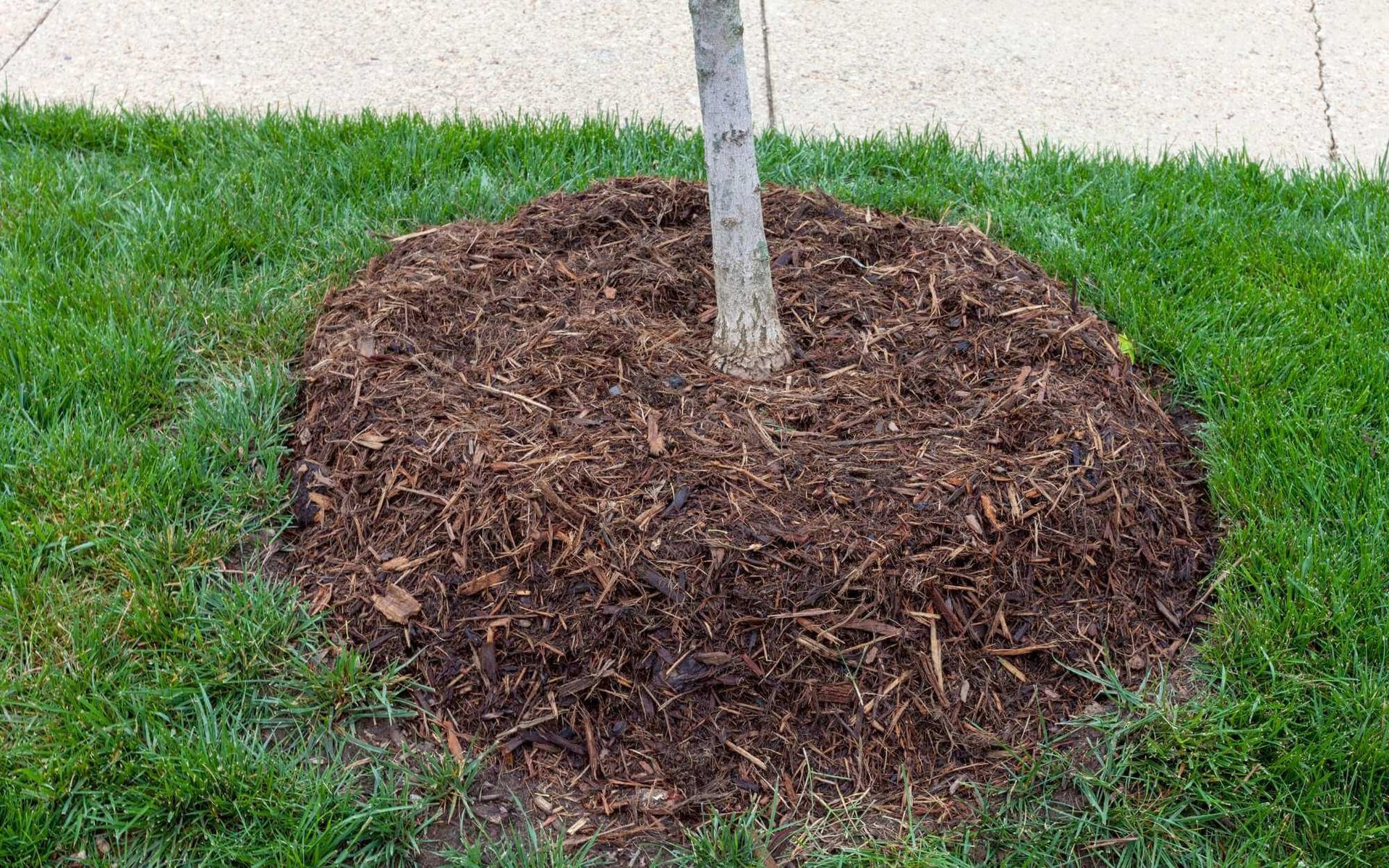
Mulching is a fundamental practice in gardening and landscaping that involves covering the soil surface around trees with an organic or inorganic mulch layer.
Its primary purpose is to create a protective barrier that offers numerous benefits for trees:
- It conserves soil moisture by reducing evaporation and preventing water runoff, which ensures that trees receive adequate hydration during hot and dry periods.
- It acts as insulation, regulating soil temperatures and shielding tree roots from extreme heat or cold.
- It suppresses weed growth, minimizing competition for essential nutrients and reducing the need for excessive manual weeding.
- It gradually breaks down over time, enriching the soil structure with organic matter and vital nutrients, promoting healthy root development, and enhancing overall tree growth.
By understanding the basics of mulching and harnessing its benefits, you can create an optimal environment for your trees to thrive and flourish.
Types of Mulch for Trees
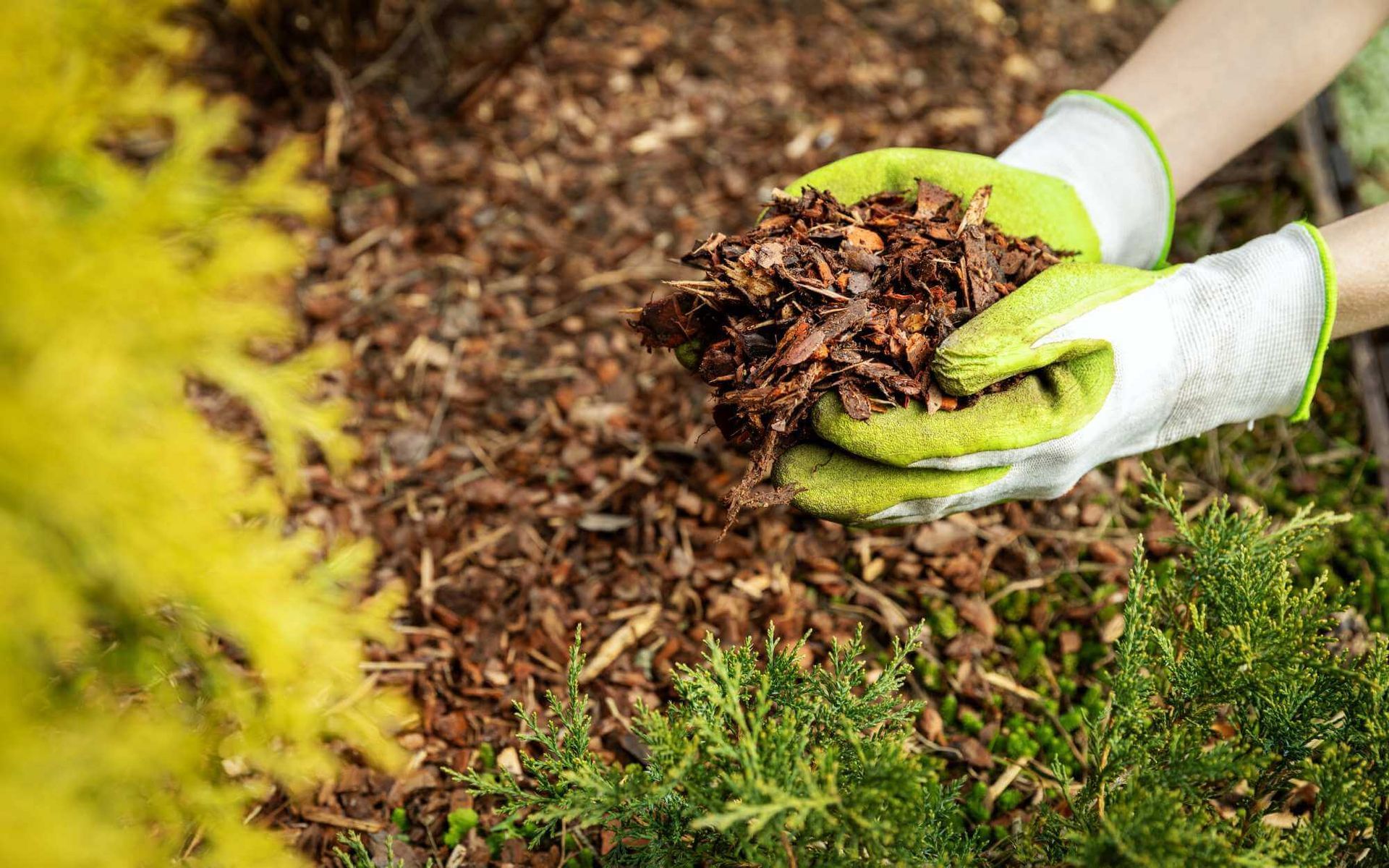
The type of mulch you use around trees is an important factor to consider. Different types of mulch offer different levels of protection and vary in terms of how quickly they break down and release replenishing nutrients into the soil.
Organic Mulch: Organic mulches, such as pine needles, wood chips, bark, straw, or leaves, are the most common form of mulch used around trees. They gradually break down over time, enriching the soil with essential nutrients.
Inorganic Mulch: Inorganic mulches, such as rubber or stone chips, will last longer than organic mulches and have fewer weeds. However, they don't offer the same level of nutrient enrichment for your soil.
Knowing what mulch material is best for your landscape trees will help you maximize the mulch benefits.
Proper Mulching Method
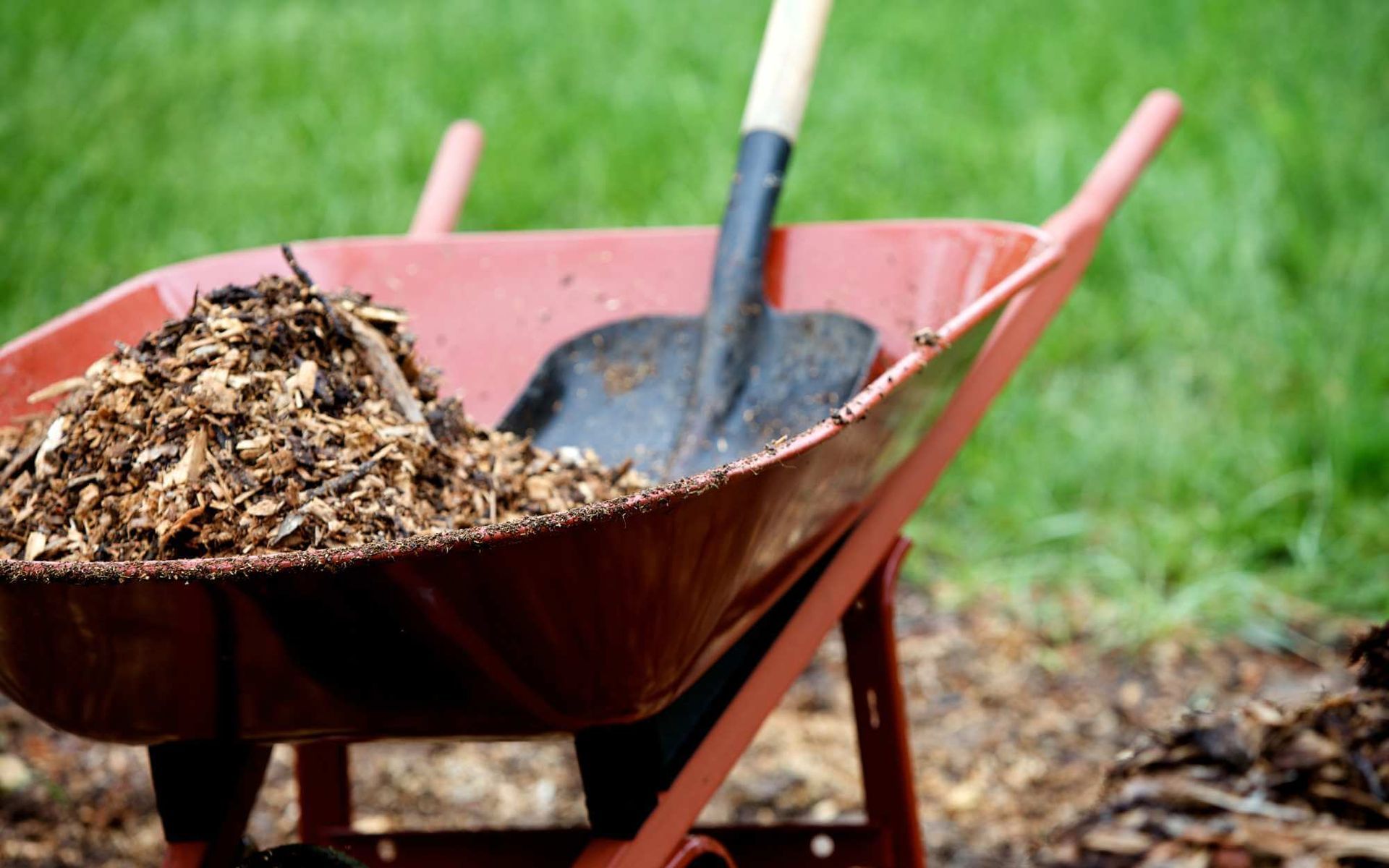
Mulching around trees is a simple but crucial process that requires some preparation and care. Here's a step-by-step guide for creating a healthy and fresh mulch bed:
- Clear the area: Remove any weeds or debris from around the tree, such as grass clippings, leaves, and sticks.
- Spread a weed barrier: Lay down a layer of newspaper or fabric to prevent weed growth.
- Apply mulch: Spread 2-4 inches of mulch unto the mulch ring around the tree, leaving a 4-6 inch bare area around the tree trunk.
- Water: Give the mulch bed a thorough watering to help settle it in place.
- Monitor and maintain: Mulching prevents weeds, but you may still need to pull any that pop up throughout the season. Check your mulch bed regularly and replace any old or worn-out mulch to maintain a healthy bed.
Follow these steps and you'll create an optimal environment for your trees and ensure their long-term health.
Common Tree Mulching Problems (and How to Avoid Them)
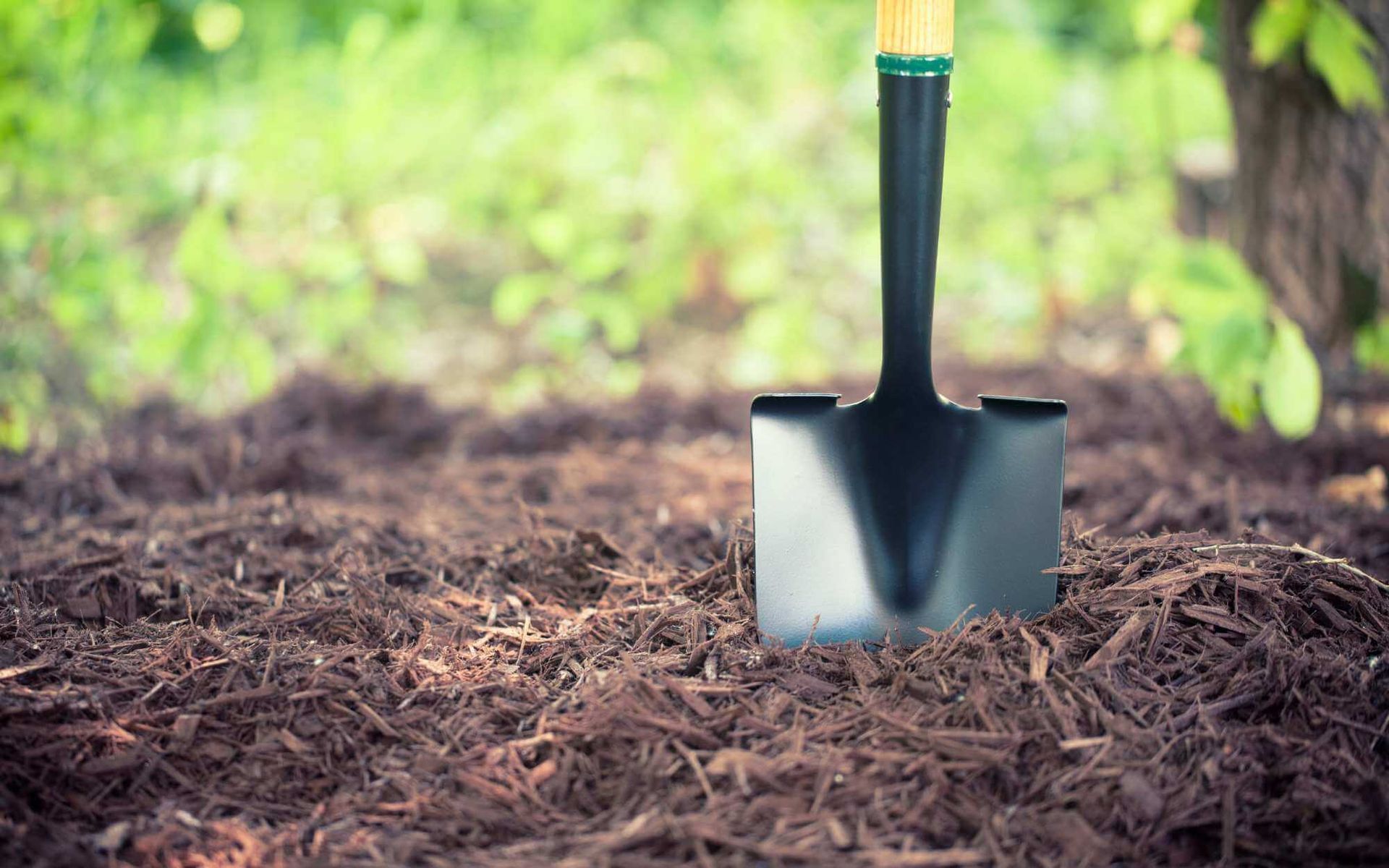
Mulching trees is beneficial when done correctly, but applying mulch improperly can lead to a variety of problems. The most common issues include:
- Mulch volcanoes: Piling mulch too high around a tree or trunk can cause “volcano mulching”, which prevents the roots from getting access to oxygen, water, and nutrients. Mulch volcano hinders healthy root growth and can even cause tree death in extreme cases. To avoid this problem, keep the mulch bed at a depth of 2-4 inches.
- Compacted soil: Too much mulch or not enough water can cause soil compaction, which reduces its ability to hold nutrients and restricts water absorption. To prevent this from happening, use the proper amount of mulch and water the soil regularly.
- Fungal growth: Applying too much mulch can cause fungal growth, which can be damaging to the tree's root system. To prevent this, make sure you keep your mulch bed at a reasonable depth and water regularly.
- Inadequate coverage: If excessive mulch can cause fungal growth, not using enough mulch can leave your tree exposed to stress, disease, and pest infestations. Make sure that the mulch depth is adequate enough to cover the root zone and protect your tree.
Pro Tip
Before root flare excavations take place, consult with a
certified arborist in Pompano Beach, FL to assess the health and condition of your trees. Trees that are already in poor condition may not respond well to excavation and could experience further damage.
Mulch the Right Way!
Mulching around trees is an important task that helps your tree stay healthy and happy. It requires some preparation and care, but following the steps outlined in this article will ensure a properly mulched tree.
If you have concerns about root flare excavations, consult with a certified arborist before proceeding. With these tips in mind, you’ll be well on your way to properly mulching your trees for optimal health!
Want a free quote or some friendly advice? Call our team today:






